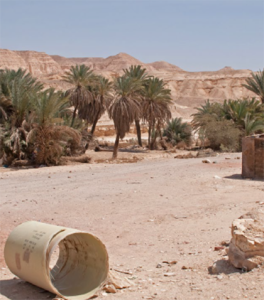Climate migration – the challenges and solutions
Around 216 million people will become climate migrants by 20-50 unless there is concrete action on global warming, according to a new report from the World Bank.
The bank’s Groundswell II report says this migration will be spread over six global hotspots because of water scarcity, crop failures, sea level rise and storm surges as well as heat stress, land loss and extreme weather events.
 The report says up to 86 million could be affected in sub-Saharan Africa, 49 million in East Asian and the Pacific, 40 million in South Asia, 19 million in North Africa, 17 million in Latin America and 5 million in Eastern Europe and Central Asia.
The report says up to 86 million could be affected in sub-Saharan Africa, 49 million in East Asian and the Pacific, 40 million in South Asia, 19 million in North Africa, 17 million in Latin America and 5 million in Eastern Europe and Central Asia.
It concludes that climate change is an increasingly potent driver of migration and that the next few years will be critical in mitigating its negative effects.
“Internal climate migration is set to increase across regions and countries. Climate change impacts will hit the poorest and most vulnerable regions the hardest and threaten to reverse development gains. In some places, questions of habitability will arise,” the report says.
“Exploring future scenarios and identifying patterns of potential “hotspots” for both in- and out-migration are key steps to better understand the nexus of climate, migration, and development,’ it says.
“The trajectory of internal climate migration in the next half-century depends on our collective action on climate and development in the next few years.
“The window to avert the conditions that lead to distress-driven internal climate migration is shrinking rapidly. Countries must come together and act decisively both to ensure that development is green, resilient, and inclusive, and to sharply reduce global emissions, consistent with the Paris Agreement.”
The report says that it is crucial to begin planning for orderly and well-managed internal climate migration where appropriate, so it can serve as an effective adaptation strategy with positive development outcomes.
“Action now at the intersection of climate, development, and migration is critical to safeguard the achievement of the Sustainable Development Goals over the next 10 years and ensure shared prosperity to mid-century and beyond,” the report says.
World Bank Vice President for Sustainable Development, World Bank Juergen Voegele said that it was important to recognise that not all migration can be prevented.
“If well managed, shifts in population distribution can become part of an effective adaptation strategy, allowing people to rise out of poverty and build resilient livelihoods,” Mr Voegele said.
“Countries can start planning today for orderly and well-managed internal climate migration. This report lays out how this can be supported, including by embedding climate migration in development planning and better understanding the factors that drive it in order to craft well-targeted policies.
“It will also entail planning for each phase of migration—before, during, and after moving—according to the different needs of communities and countries.
“Development that is green, resilient, and inclusive can slow the pace of distress-driven internal climate migration. This report is a timely call for urgent action at the intersection of climate, migration, and development,” Mr Voegele said.
The report says climate-induced migration exposes the fundamental connection between climate change and development directly impacting lives and livelihoods.
“While internal climate migration may be a reality we cannot avoid, with the right action now it doesn’t have to become a crisis,” it says.
Read the full report here: https://openknowledge.worldbank.org/handle/10986/36248












